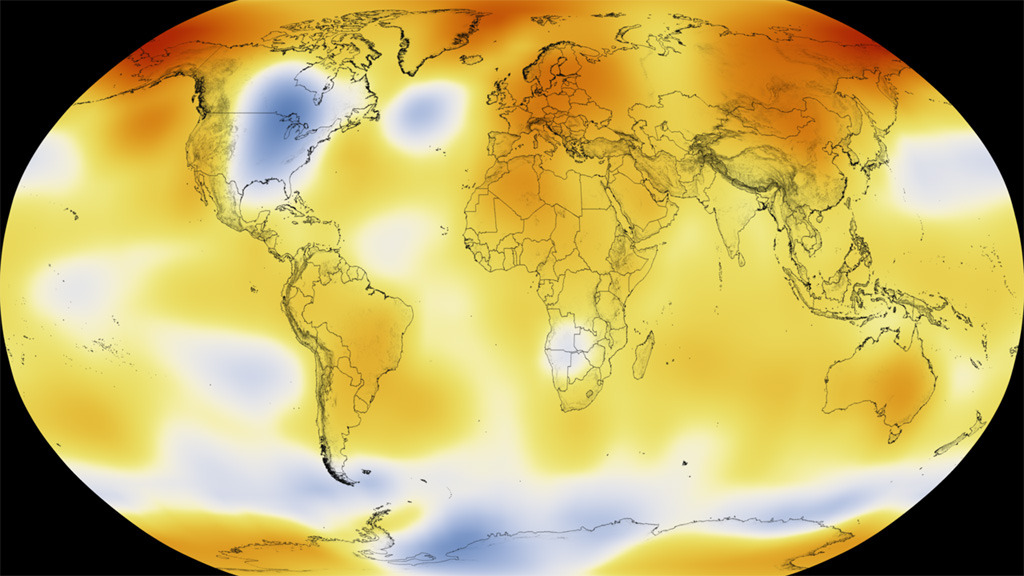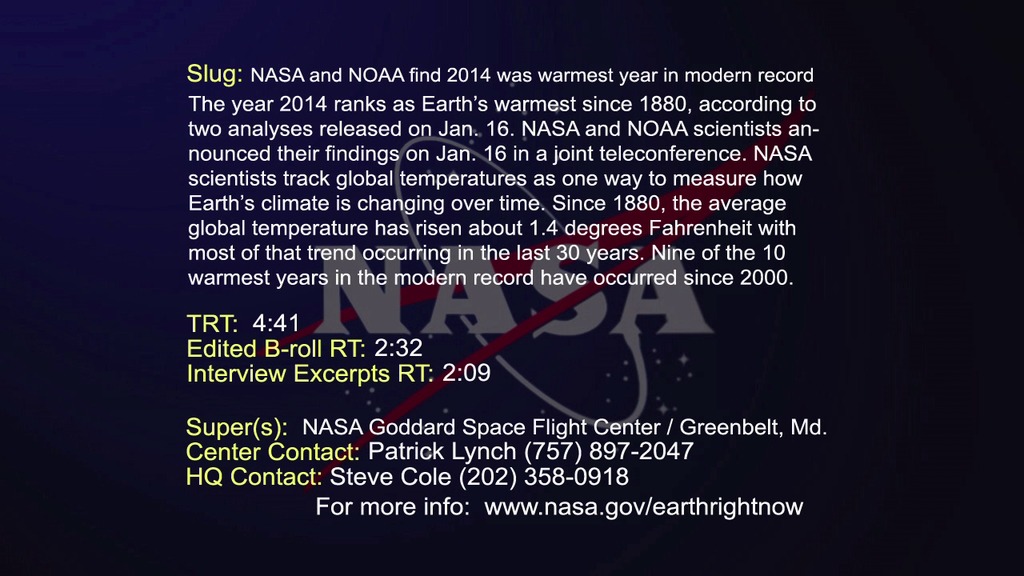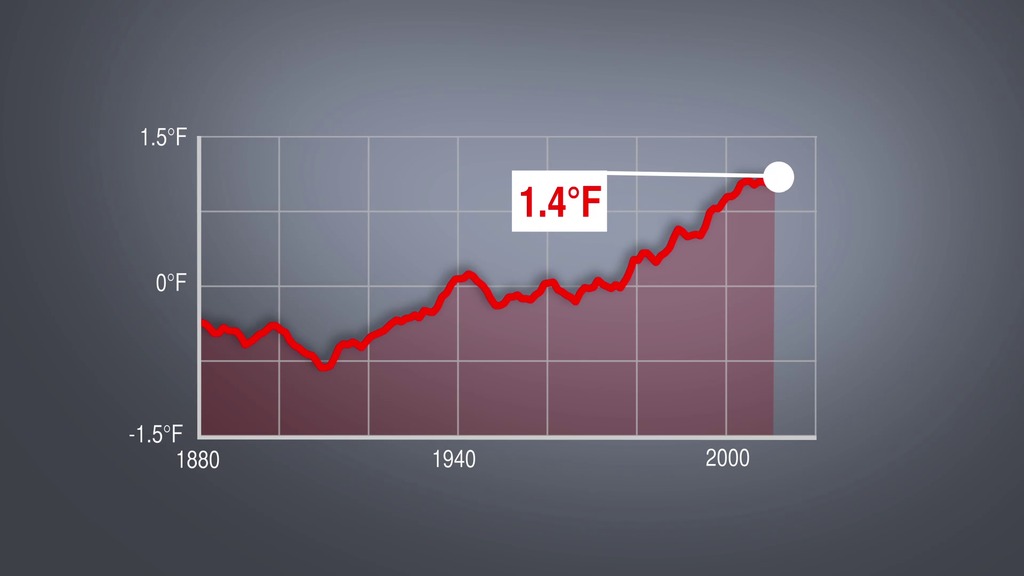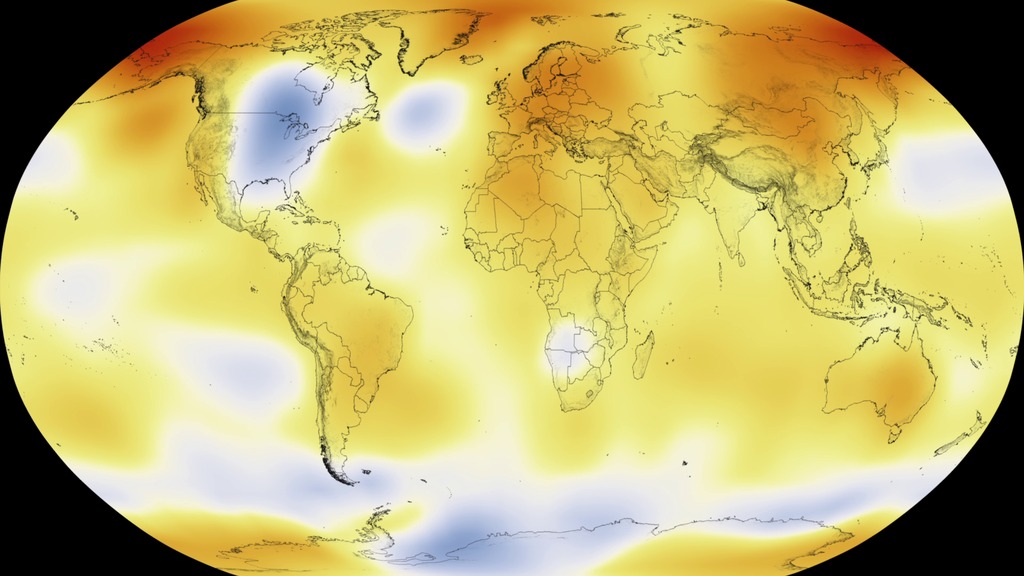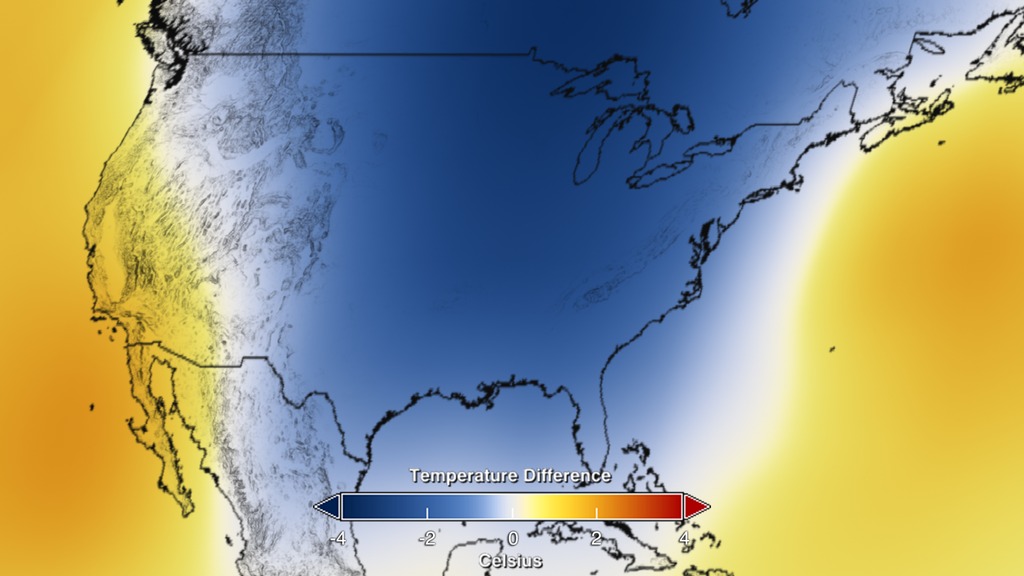2014 Global Temperature Anomalies: United States to Global view
This visualization of annual global temperature anomalies from 2014 starts with a local view of the United States and then zooms out to the global color-coded map. Blue represents colder then normal temperatures and red represents warmer then normal temperatures.
The year 2014 ranks as Earth’s warmest since 1880, according to an analysis by NASA scientists.
The 10 warmest years in the instrumental record, with the exception of 1998, have now occurred since 2000. This trend continues a long-term warming of the planet, according to an analysis of surface temperature measurements by scientists at NASA’s Goddard Institute of Space Studies (GISS) in New York.
In an independent analysis of the raw data, NOAA scientists also found 2014 to be the warmest on record.
For understanding climate change, the long-term trend of rising temperatures across the planet is more important than any year’s individual ranking. These rankings can be sensitive to analysis methods and sampling. While 2014 ranks as the warmest year in NASA’s global temperature record, it is statistically close to the values from 2010 and 2005, the next warmest years.
Since 1880, the average surface temperature of Earth has warmed by about 1.4 degrees Fahrenheit (0.8 degrees Celsius), a trend that is largely driven by the increase in carbon dioxide and other human emissions into the planet’s atmosphere. The majority of that warming has occurred in the past three decades.
Regional differences in temperature in any year are more strongly affected by weather dynamics than the global mean. For example, in the U.S. in 2014, parts of the Midwest and East Coast were anomalously cool, while Alaska and three western U.S. states – California, Arizona and Nevada – recorded their warmest years on record, according to NOAA, which assesses official U.S. temperature records.
The GISTEMP analysis website is located at: http://data.giss.nasa.gov/gistemp/

Color bar
This frame sequence has the same global temperature anomaly data from 2014 without the colorbar overlay.
For More Information
Credits
Please give credit for this item to:
NASA/Goddard Space Flight Center Scientific Visualization Studio
Data provided by Robert B. Schmunk (NASA/GSFC GISS)
-
Scientists
-
Gavin A. Schmidt
(NASA/GSFC GISS)
-
Reto A. Ruedy
(SIGMA Space Partners, LLC.)
-
Robert B Schmunk
(SIGMA Space Partners, LLC.)
-
Gavin A. Schmidt
(NASA/GSFC GISS)
-
Writer
- Patrick Lynch (Wyle Information Systems)
-
Producers
- Michelle Handleman (USRA)
- Joy Ng (USRA)
- Leslie McCarthy
-
Data visualizer
- Lori Perkins (NASA/GSFC)
Series
This page can be found in the following series:Datasets used
-
GISTEMP [GISS Surface Temperature Analysis (GISTEMP)]
ID: 585The GISS Surface Temperature Analysis version 4 (GISTEMP v4) is an estimate of global surface temperature change. Graphs and tables are updated around the middle of every month using current data files from NOAA GHCN v4 (meteorological stations) and ERSST v5 (ocean areas), combined as described in our publications Hansen et al. (2010), Lenssen et al. (2019), and Lenssen et al. (2024).
Credit: Lenssen, N., G.A. Schmidt, M. Hendrickson, P. Jacobs, M. Menne, and R. Ruedy, 2024: A GISTEMPv4 observational uncertainty ensemble. J. Geophys. Res. Atmos., 129, no. 17, e2023JD040179, doi:10.1029/2023JD040179.
This dataset can be found at: https://data.giss.nasa.gov/gistemp/
See all pages that use this dataset
Note: While we identify the data sets used on this page, we do not store any further details, nor the data sets themselves on our site.
Release date
This page was originally published on Friday, January 16, 2015.
This page was last updated on Wednesday, May 3, 2023 at 1:50 PM EDT.
